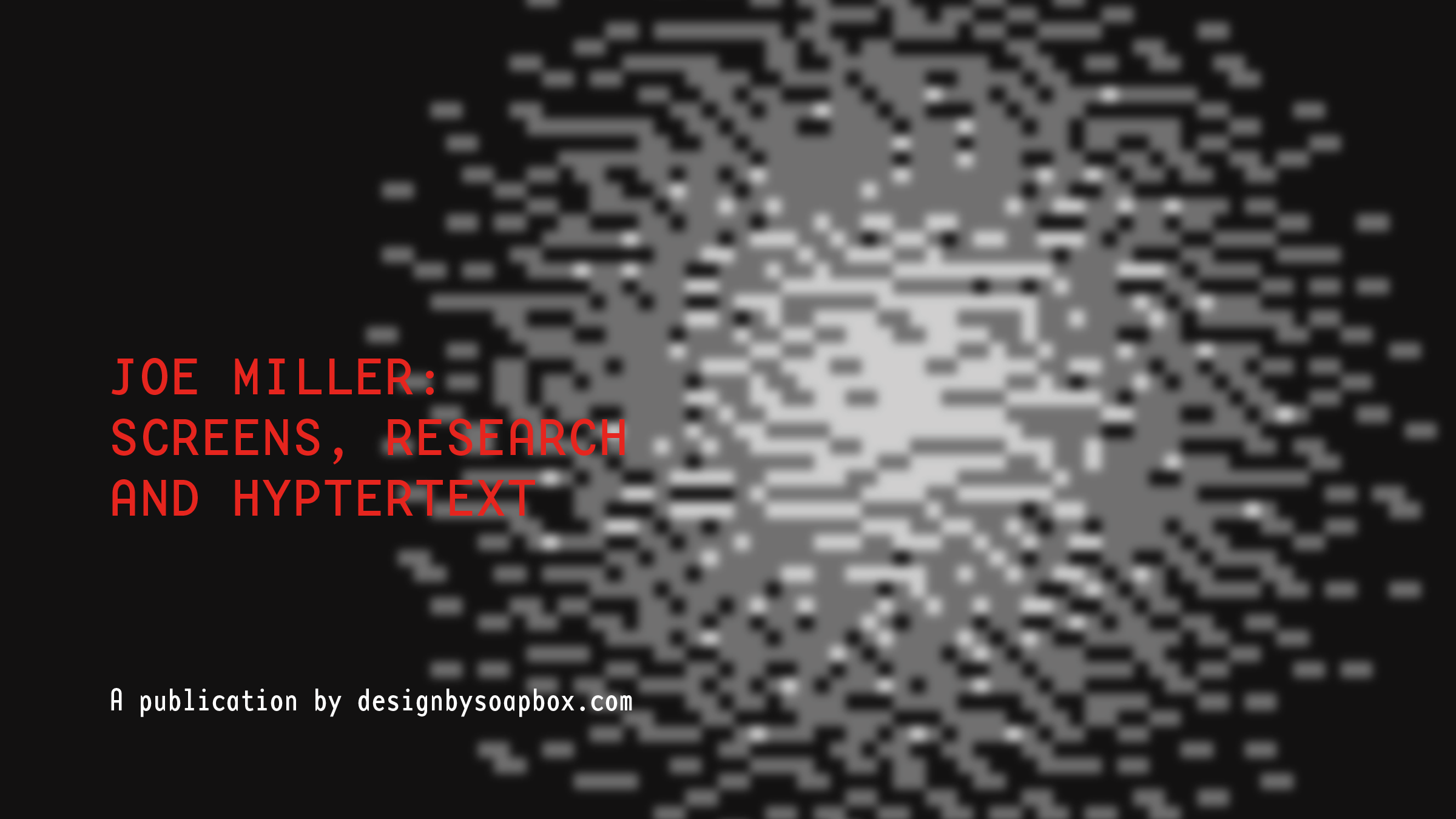Screens, Research and Hypertext
Powered by 🌱Roam GardenIntroduction to the Project

There's an old myth that if you put a frog in a pot of water and raise the temperature gradually, the frog will stay put as it boils to death. It's not true. But it's such a good metaphor for acclimatizing to gradual change that I'm going to use it anyway.
The web has boiled us all alive.
Those even just a few years younger than I may not really remember a world in which information was hard to come by. Back in the olden days our quaint information sources included things like:
A printed book to find phone numbers (which needed to be local, lest you pay long-distance charges).
A paper map for navigating to new places or finding new routes around traffic or road closures.
A Blockbuster Video to try and figure out what other films you'd seen hey, it's that guy in.
An atlas or encyclopedia to find out the capital of Nepal.
The local morning news to know if you should carry an umbrella.
A library to find out when the Social Security trust fund would run out of money.
Today, we'd probably find all that using the tiny pocket computer we all carry around.
You can find out just about anything there is to know on the web. My wife and I joke sometimes that if Google doesn't know something, it's probably not worth knowing. Like the apocryphal frog, we get so many things from the web that we mostly don't even realize we're doing it anymore.
But while the web has completely transformed how we consume information, it has done remarkably little to change how we produce it.
Media organizations lifted article formats from newsprint and reformatted them as HTML. Broadcast media uploaded segments to YouTube. Radio stations broadcast over the web. TV shows moved from networks to streaming services. Movies, too, particularly in the COVID era.
In the sector where I've spent the last two decades—scholarly research—reports, articles and events look exactly like they did when the professors who taught me were themselves learning the field.
These outputs were optimized for the printed page. Simply shifting them to a screen often results in a worse reading experience than we had before. It's small wonder that so many researchers still reach for the print button.
That's a missed opportunity.
Hypertext enables entirely new ways of thinking about the world. It lets us visualize ideas in new ways, directly comment on texts, remix content, hold conversations across time and space.
To be sure, that's not how most researchers use the web.
But it could be.
This work brings together a number of different strands of thinking that I've developed over 20 years of work in and with the research sector, as an academic scholar, journalist and content strategist. It's a combination of essays I've written previously—though in nearly every case, substantially rewritten—and new work published here for the first time. There are around 200 pieces of content in total, each linked to multiple others.
The work is intended as both an argument for and illustration of the web that could be. Beyond this screen, you'll see a very different sort of interface. You'll be able to explore based on your own interests and to add your own comments throughout. (You'll need a free Hypothesis account for that last bit.)
The project addresses eight broad themes.
An exploration of nonlinear thinking and nonlinear writing.
Some navel-gazing about the nature of research and how scholars read.
Discussions of hypertext theory and the history of hypertext.
Arguments for creating research content in modular chunks rather than in blobby reports.
Thoughts about how authoring content and assembling it into larger units are different—if complementary—tasks.
Examples of different—better?—ways of presenting research content online.
The role of rhetoric in thinking about content strategy and writing hypertext.
Occasional digressions into philosophy.
There's obviously a lot of overlap between all of these themes. Which is part of the reason for presenting this work as interlinked hypertext rather than, say, a book.